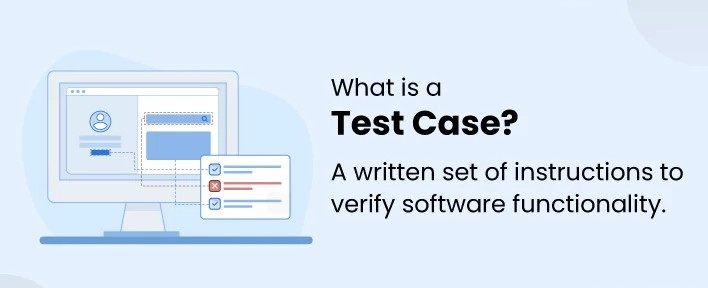In this modern age of highly competitive software development, quality products are something very important for any company. Ensuring quality assurance through crowdtesting is one of the most frequent terms in the development circles of strategy developers who need full and efficient testing. This paper discusses how crowdtesting can help traditional QA, looking at the main benefits as well as ways in how crowdtesting can be effectively integrated into the development process.
Importance of Software Quality Assurance
Software Assurance (QA) quality ensures that all the bugs, defects, and usability glitches are addressed before the product hits the marketplace. QA Testing Services Company India ensures a smooth user experience, minimizes post-launch issues, and ultimately strengthens brand reputation. Traditional in-house QA teams normally have constraints both in terms of scope and diversity. This is an alternative to the crowdtesting platform which can boost a company’s testing capabilities and ensure a stronger final product.
Traditional Quality Assurance vs. Crowdtesting
The traditional approach to QA is undertaken with a team of native testers dedicated exclusively to the testing of a single application and operating on predetermined test plans and test scenarios for testing it. It provides a lot of control and consistency, but also a few drawbacks: the size of the team and its skill set. Crowdtesting platforms and services connect developers with a global network of testers, enabling them to leverage a wider range of devices, platforms, and user perspectives. This diversity leads to a more comprehensive understanding of how the software functions in real-world situations.
Benefits of Crowdtesting
There are many compelling reasons to include crowdtesting in your QA strategy:
- More Coverage for Testing:The crowdtesting platform would allow the firm to access a pool of testers with devices and operating systems from different geographical locations. This allows for broader testing coverage, uncovering bugs and usability issues that might be missed by a limited internal team.
- Faster Turnaround Time:Test execution via crowdtesting is a lot faster compared to the traditional methods because it has a large pool of testers. Thus, it allows enough time for developers to recognize and fix issues earlier in the development cycle, making a product release sooner.
- Cost-Effectiveness:To maintain a large in-house QA team is an expensive affair. Crowdtesting offers a cost-effective alternative that enables one to scale testing efforts up and down, as it is necessitated by a specific project.

- Real-World User Feedback:Crowd testers are actual users, so they will provide real insights into the software usability and functionality from a different perspective. This feedback helps developers to come up with a more friendly and intuitive product for users.

How does Crowdtesting Operate?
The standard way of working in a crowdtesting project looks like this:
- Project Setup:The developers define the scope of testing, objectives, and specific test cases on the chosen crowdtesting platform.
- Tester Recruitment:The system will automatically recruit suitable testers according to the requirements of the project and his/her expertise.
- Test Execution:The testers execute the given instructions and run test cases over their devices.
- Bug Reporting:Testers document all bugs and/or issues related to usability. They are documented minutely with the correct description in the form of a report.
- Defect Management:Developers get the reports of the bugs, analyze them, and prioritize the fixes within the development cycle.
Forms of Crowdtesting
Several types of testing are included in crowdtesting services, and each type has a different focus area:
- Functional Testing:It is the type in the core form that verifies whether the software functions as needed by the requirements specification.

- Usability Testing:Judges the usability of the software from the testers in terms of ease of use, intuition, and general experience one gets from using it.
- Localization Testing:This is the testing to check the functionality of software and whether it is culturally appropriate for languages and different regions.
- Compatibility Testing:Testers take care that the said web application is compatible across devices, OS, and browsers.
- Security Testing:The crowdtesters can help outline probable security holes in software.
Table: Benefits of Different Crowdtesting Types
| Type of Crowdtesting | Focus | Benefits |
| Functional Testing | Core Functionality | Ensures features work as per requirements |
| Usability Testing | User Experience | Improves user satisfaction and ease of use |
| Localization Testing | Cultural Appropriateness | Expands market reach and avoids cultural missteps |
| Compatibility Testing | Device & Platform Compatibility | Guarantees a seamless user experience across different environments |
| Security Testing | Vulnerability Detection | Identifies potential security risks before launch |
Case Studies
- Case Study 1:
- Challenge:A large e-commerce website was noticing the abandonment of many shopping carts on mobile devices. Internal testing focused on popular devices and browsers, but the issue persisted.
- Solution:The company went for crowdtesting to test the website in a much wider spectrum of devices and browsers used by customers. This encompassed older smartphones, tablets, and less common operating systems.
- Outcome:This way, crowdtesting was able to identify compatibility issues across multiple device-browser combinations, causing checkout page glitches and hindering mobile transactions. That significantly increased sales for the company because the rate of abandoning the cart dramatically decreased and mobile conversion with proper resolutions increased.
- Case Study 2:
- Challenge:A social media company was preparing to launch its application internationally to a new international market. They needed to ensure that the app was working properly and was culturally acceptable for the target users.
- Solution:The company conducted a crowd test with testers from the target market. This way, it was possible to test the localization of the app, including translated text, date formats, and cultural references.
- Outcome:Crowdtesting identified several localization issues, such as awkward phrasing of the translated text and date formats contradictory to local customs. This guaranteed that the international audience would face no hitches in app usage and the app adoption would be swifter for all.
Quality Assurance of the Crowd Test
The quality of a tester pool becomes the basis for the success of a crowdtesting project. That’s the reason reputable crowdtesting platforms subject their testers to tough scrutiny to ascertain if they have what it takes to work on a project before hiring them. Furthermore, regular training programs keep testers updated with the latest methodologies and tools.
The platforms also utilize several measures for quality control to assure the precision and repeatability of the test results. This may include:
- Pre-Qualification Tests:Testers have to pass the respective tests so that they can express their competencies before being part of any projects.
- Double-Blind Testing:Executes the functionality with multiple tests and checks by multiple testers to get fair findings and reduce bias.
- Bug Bounty Programs:It incentivizes testers on the platform to report high-severity bugs, thus encouraging high testing levels.
- Tester Reputation System:It keeps track of how the testers are performing well, and how reliable they are. So, the developers can choose those testers with a good record.
Development Process and Crowd Testing Process Integration
Software quality assurance with crowdtesting is most effective when integrated within the development life cycle. This is how:
- Early-Stage Testing: Leverage crowdtesting to determine what causes core functionality to fail and reveals usability roadblocks at the earliest stages of development.
- Continuous Integration/Delivery (CI/CD): The inclusion of crowd testing in CI/CD pipelines will test code automatically with every build, which will result in detecting bugs and rectification of the same at an early stage.
- Pre-Launch Testing: Conduct extensive crowdtesting before a major release to uncover any lingering issues and refine the final product.
Proper integration of crowdtesting through the development process will bring in a more proactive and iterative approach to QA that will finally translate into a polished, user-centered, and working product.
FAQs
- Will it be possible to improve Software Quality Assurance with Crowdtesting?
Absolutely! Crowdtesting platforms and services offer a wider pool of testers with diverse devices and real-world experiences. It results in a much more comprehensive set of tests compared to traditional methods and, ultimately, improves software quality assurance.
- How does crowdtesting compare to a traditional QA Testing Services Company in India?
It is much more scalable and cost-effective. A traditional variant in QA Testing Services Company India would probably be in a position to provide dedicated teams, but not have the crowdtesting feature’s benefits in terms of global reach and different user perspectives. Software quality assurance with crowdtesting allows you to leverage a global pool for a more comprehensive testing experience.
- What kind of projects do you recommend for crowdtesting?
Crowdsourced testing can be particularly useful in various projects, from mobile applications to those involving the development of web-based applications, games, and e-commerce.
- Is crowdtesting really secure?
Security is a primary concern for reputable crowdtesting platforms and services. Such companies would have to implement safety mechanisms, such as a safe testing environment and non-disclosure agreements (NDAs), to protect their software from the very beginning and up until the.
Conclusion
Ensuring quality assurance through crowdtesting has become a valuable tool for developers seeking a comprehensive and efficient QA approach. Incorporating a wide range of real-life skills and perspectives derived from a global testing community, crowdtesting will enable developers to trace and fix problems within the software at an early stage of the development cycle. Only then can they deliver a quality product that makes its user base happy.
